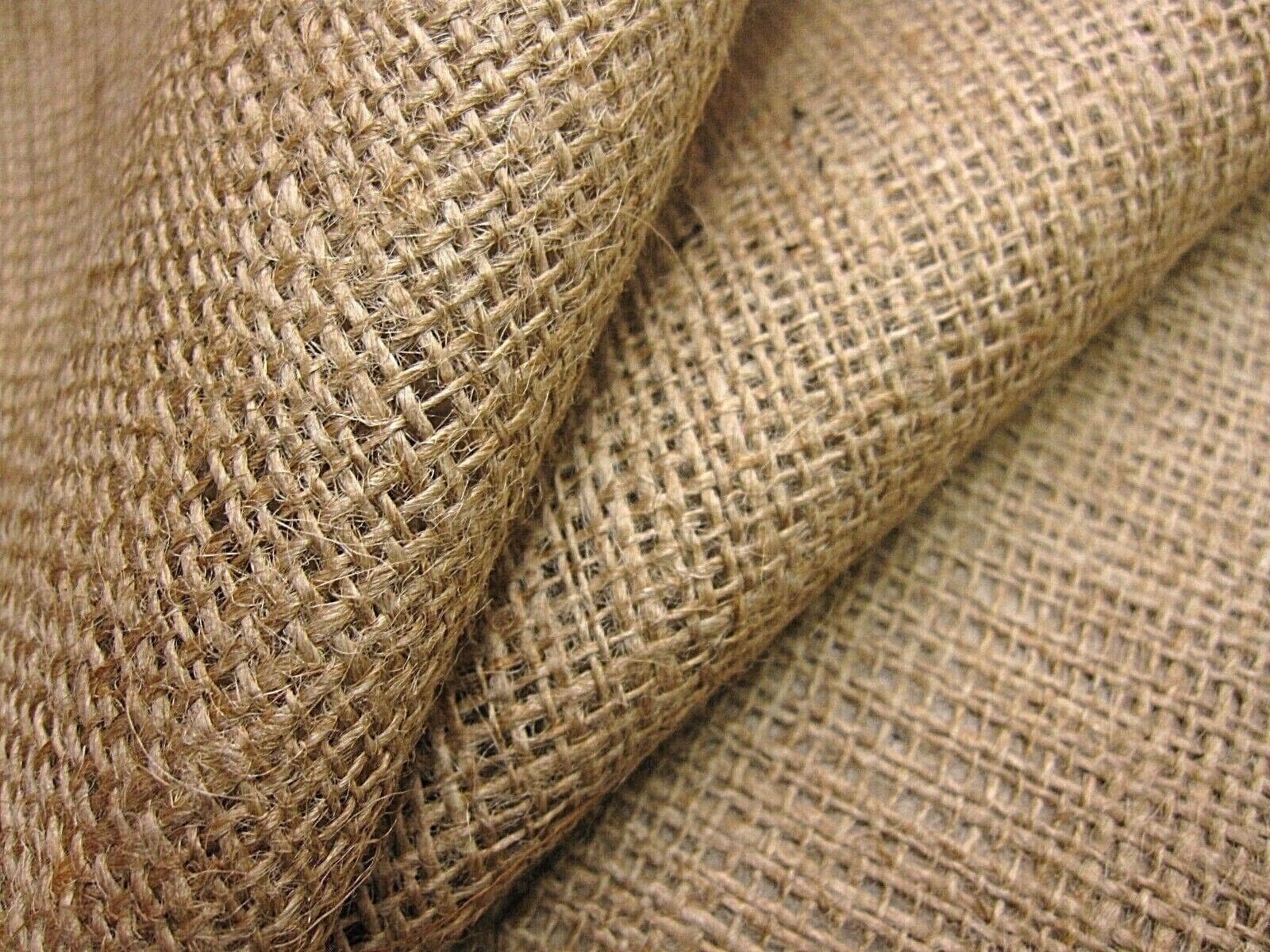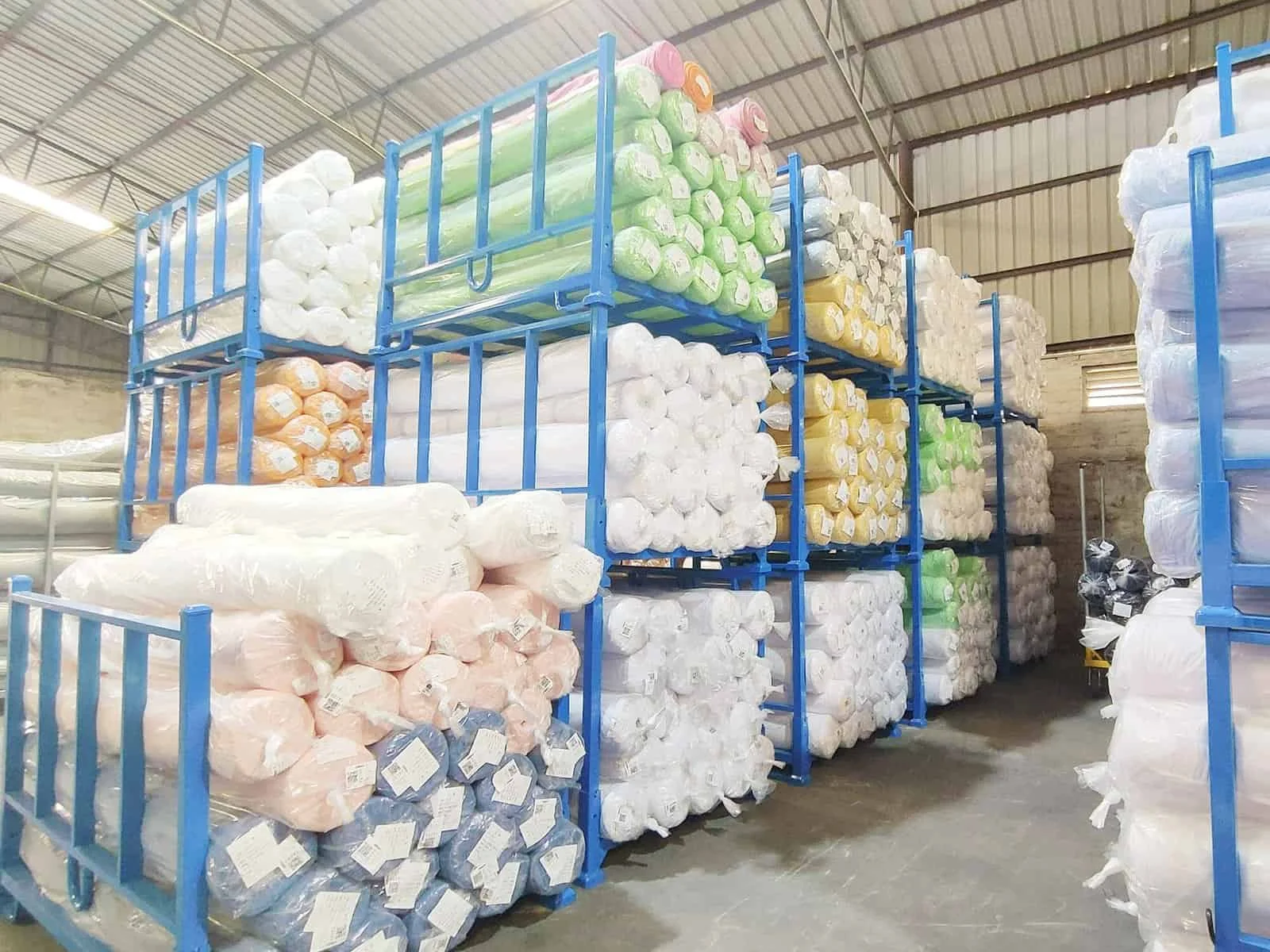Introduction: Why People Ask About Acrylic Fabric
If you’ve ever checked a clothing label and wondered, “What is acrylic fabric?”, you’re not alone. This material shows up in sweaters, blankets, outdoor furniture, and even upholstery. But despite how common it is, many people aren’t sure what acrylic fabric actually is—or how it compares to natural fibers like wool or cotton.
This article breaks it down in simple terms, so you’ll know what you’re buying, wearing, and using in your home.
What Is Acrylic Fabric?
Acrylic fabric is a synthetic textile made from a polymer called acrylonitrile. Unlike natural fibers (cotton, wool, linen), acrylic is manufactured through a chemical process that turns petroleum-based compounds into fibers that can be spun into yarn or woven into fabric.
Think of it as a man-made alternative to wool—lightweight, warm, and soft, but often more affordable and versatile.
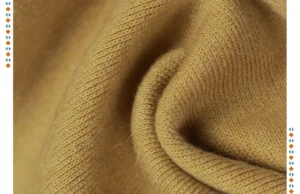
Properties of Acrylic Fabric
Acrylic has a mix of strengths and weaknesses. Here are the main things to know:
- Soft and lightweight – Often used as a wool substitute
- Warm and insulating – Retains heat well, making it ideal for cold weather clothing
- Resistant to moths and mildew – Unlike wool, insects don’t damage it
- Colorfast – Holds dye well, meaning fabrics stay vibrant even after washing
- Wrinkle- and shrink-resistant – Easier to care for than many natural fabrics
- Quick-drying – Great for outdoor gear or items that get washed often
On the downside:
- Can feel less breathable than cotton or wool
- May pill (form small fabric balls) over time
- Lower heat tolerance—can melt if exposed to high temperatures
- Not as durable as some natural fibers under heavy use
Common Uses of Acrylic Fabric
You’ll see acrylic in many areas of daily life:
- Clothing: Sweaters, hoodies, socks, scarves, hats, and gloves
- Home textiles: Blankets, throws, rugs, and upholstery
- Outdoor fabrics: Patio cushions, awnings, and tents (when blended with other fibers)
- Industrial uses: Protective clothing, filtration materials, and carpeting
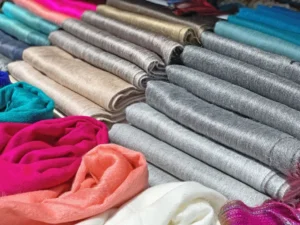
It’s often blended with wool, cotton, or polyester to improve comfort and durability.
Is Acrylic Fabric Safe?
Yes, acrylic fabric is considered safe for everyday use. However, since it’s a synthetic, some people with sensitive skin may find it slightly irritating compared to natural fibers.
From an environmental perspective, acrylic is not biodegradable and sheds microplastics when washed. This has raised concerns about its long-term sustainability.
Caring for Acrylic Fabric
If you own clothes or home goods made from acrylic, here’s how to make them last:
- Washing: Machine wash on gentle with cold or warm water
- Drying: Air dry or tumble dry low—avoid high heat
- Ironing: Usually not needed, but if required, use the lowest setting
- Storage: Keep in a cool, dry place; no need for mothballs
Because it’s quick-drying and wrinkle-resistant, acrylic is generally low-maintenance compared to natural fibers.
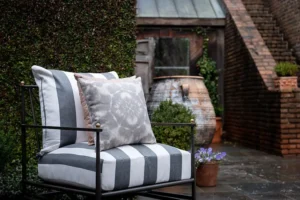
Pros and Cons of Acrylic Fabric
Pros:
- Affordable alternative to wool
- Soft, warm, and lightweight
- Easy to care for (no special dry cleaning needed)
- Resistant to pests and mildew
- Holds color well
Cons:
- Less breathable than natural fibers
- Can pill over time
- Sensitive to high heat
- Environmental concerns due to microplastics
FAQ: What Is Acrylic Fabric?
Q: Is acrylic fabric good for summer?
Not really—acrylic retains heat, so it’s better suited for fall and winter clothing.
Q: Is acrylic fabric itchy?
It depends. High-quality acrylic can feel soft, but cheaper versions may feel scratchy.
Q: Does acrylic fabric last long?
Yes, with proper care, it can be durable, though it may pill more quickly than wool or cotton.
Q: Is acrylic fabric waterproof?
No, but it dries quickly, which makes it practical for outdoor use.
Conclusion: Should You Choose Acrylic Fabric?
So, what is acrylic fabric? It’s a man-made fiber designed to mimic wool, offering warmth, softness, and easy care at a fraction of the price. While it has downsides like pilling and environmental concerns, it remains popular for everyday clothing, home décor, and outdoor gear.
If you want affordable, colorful, and low-maintenance textiles, acrylic fabric is a solid choice—just avoid high heat and consider blends for added comfort.

